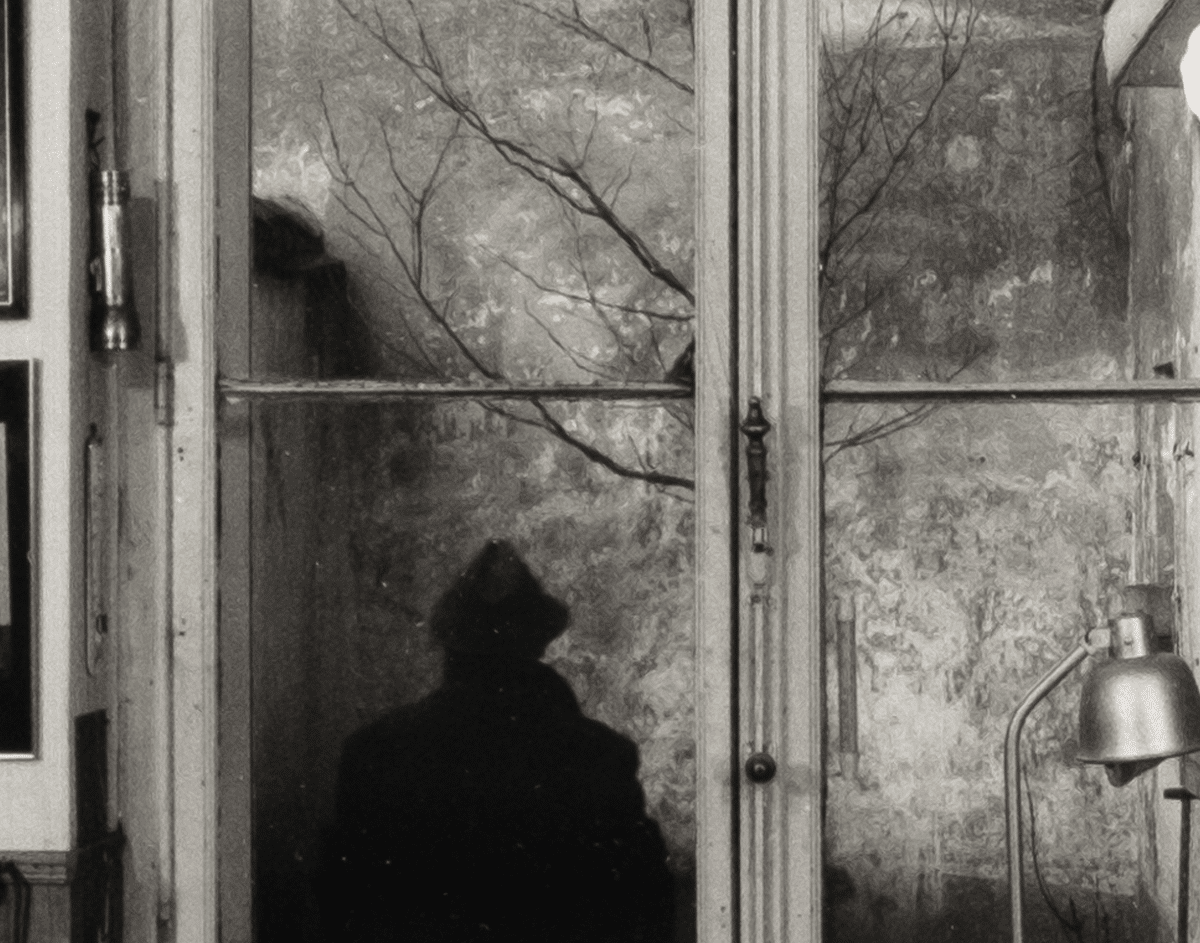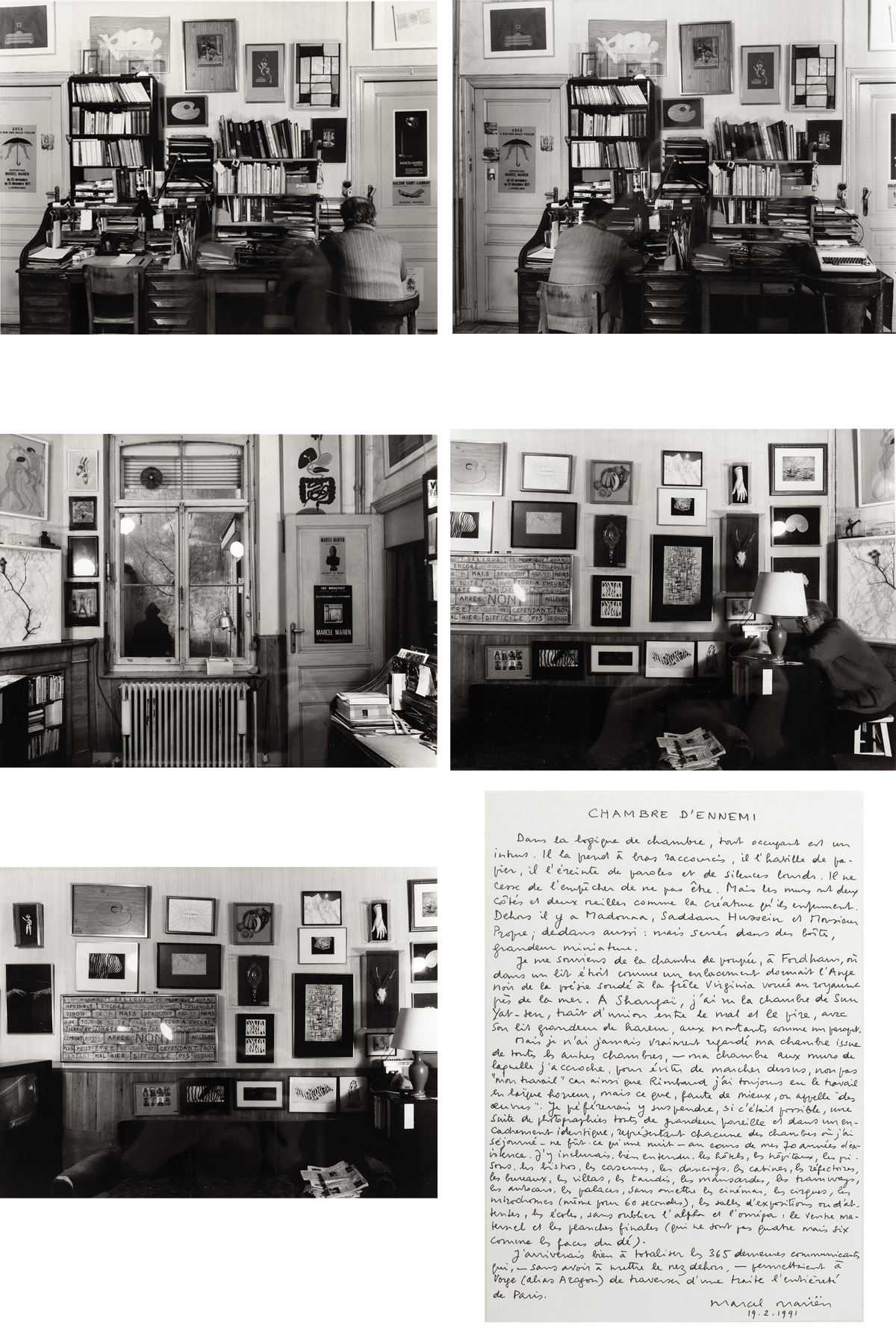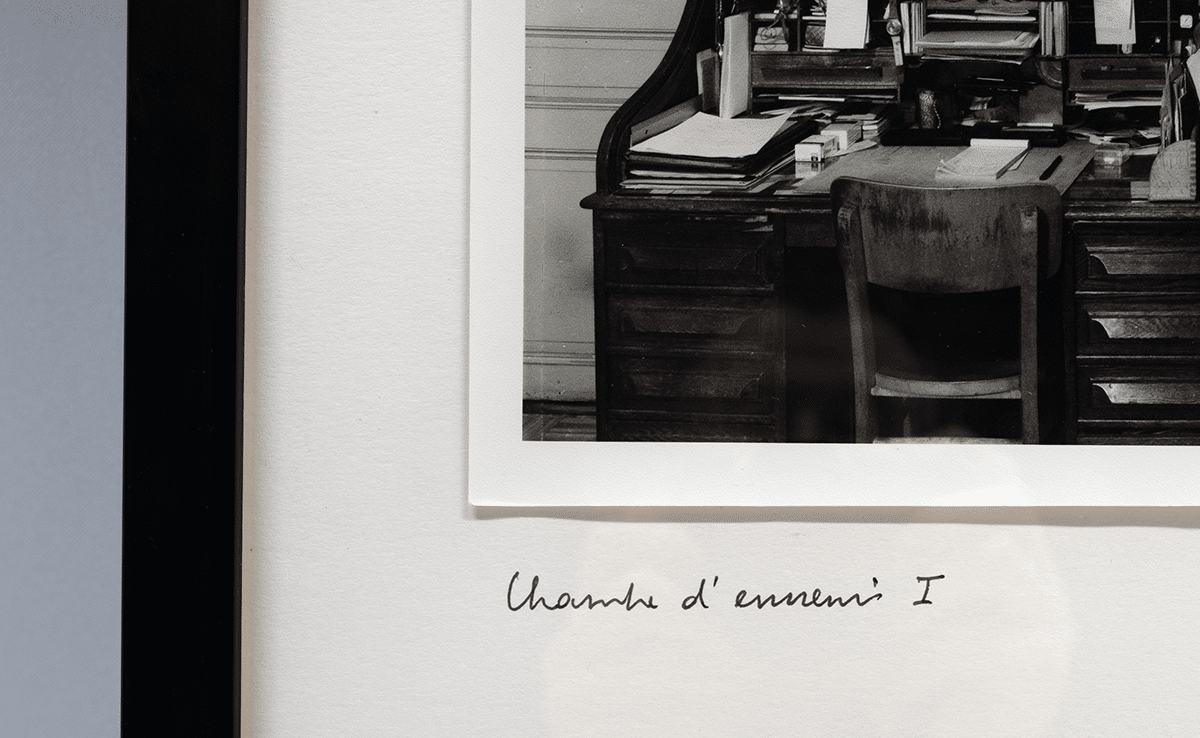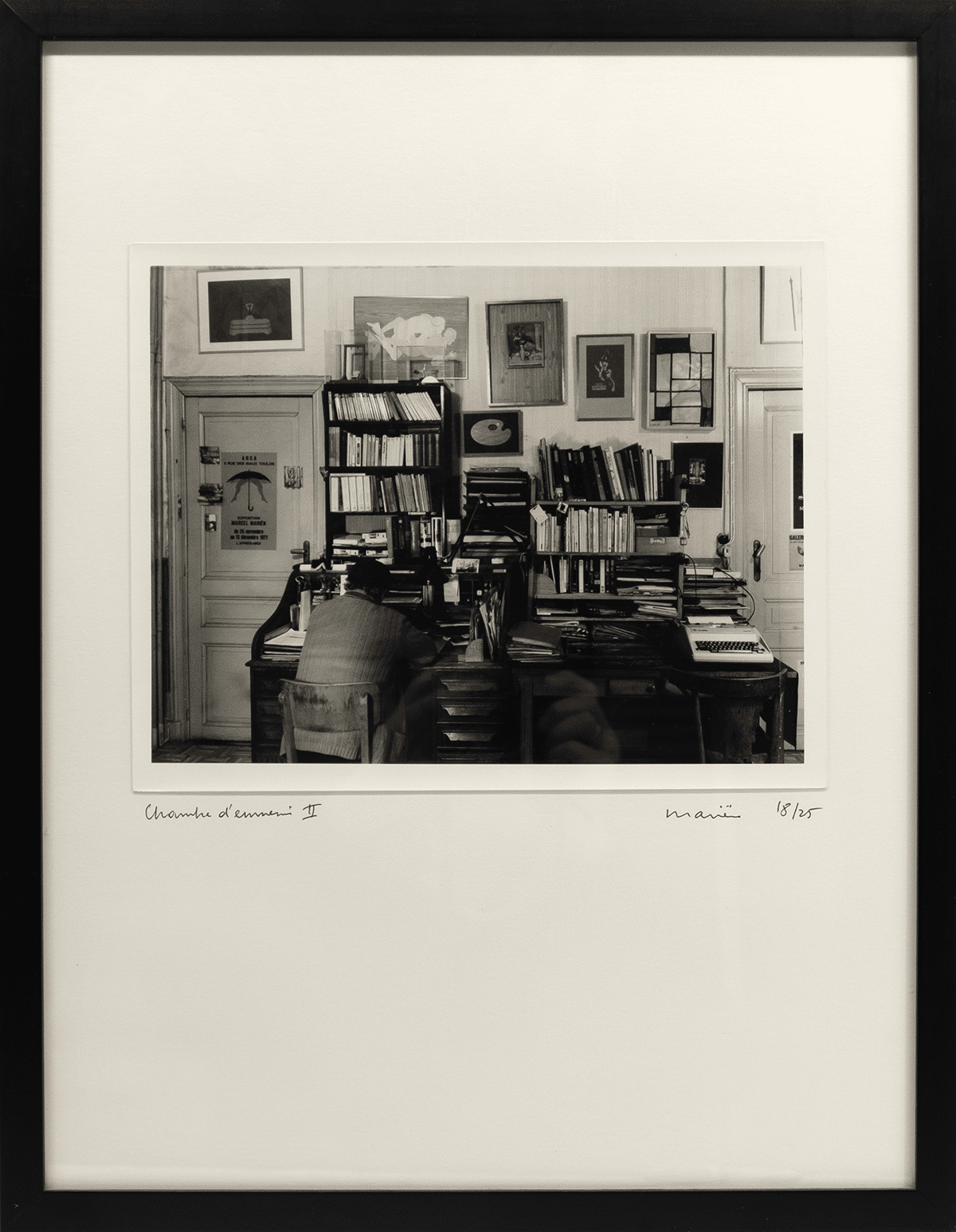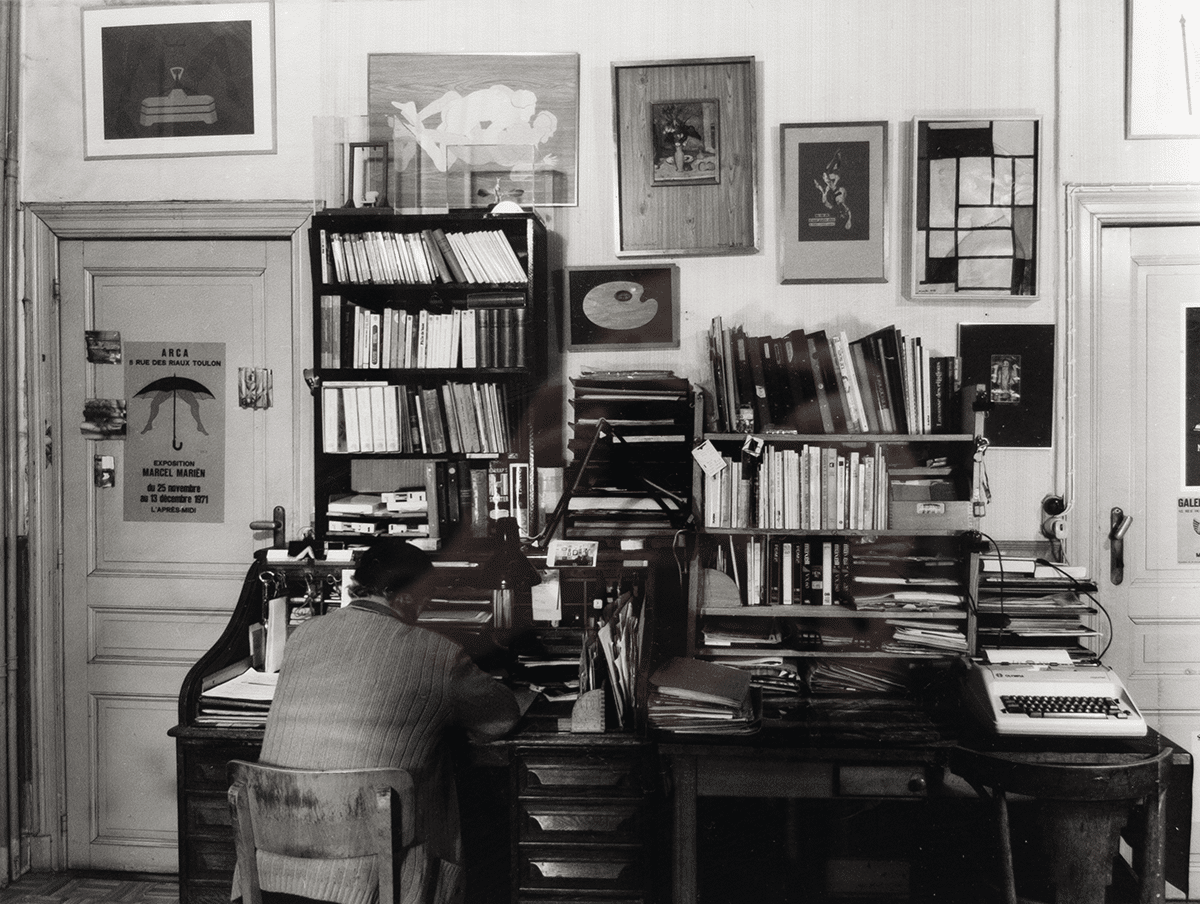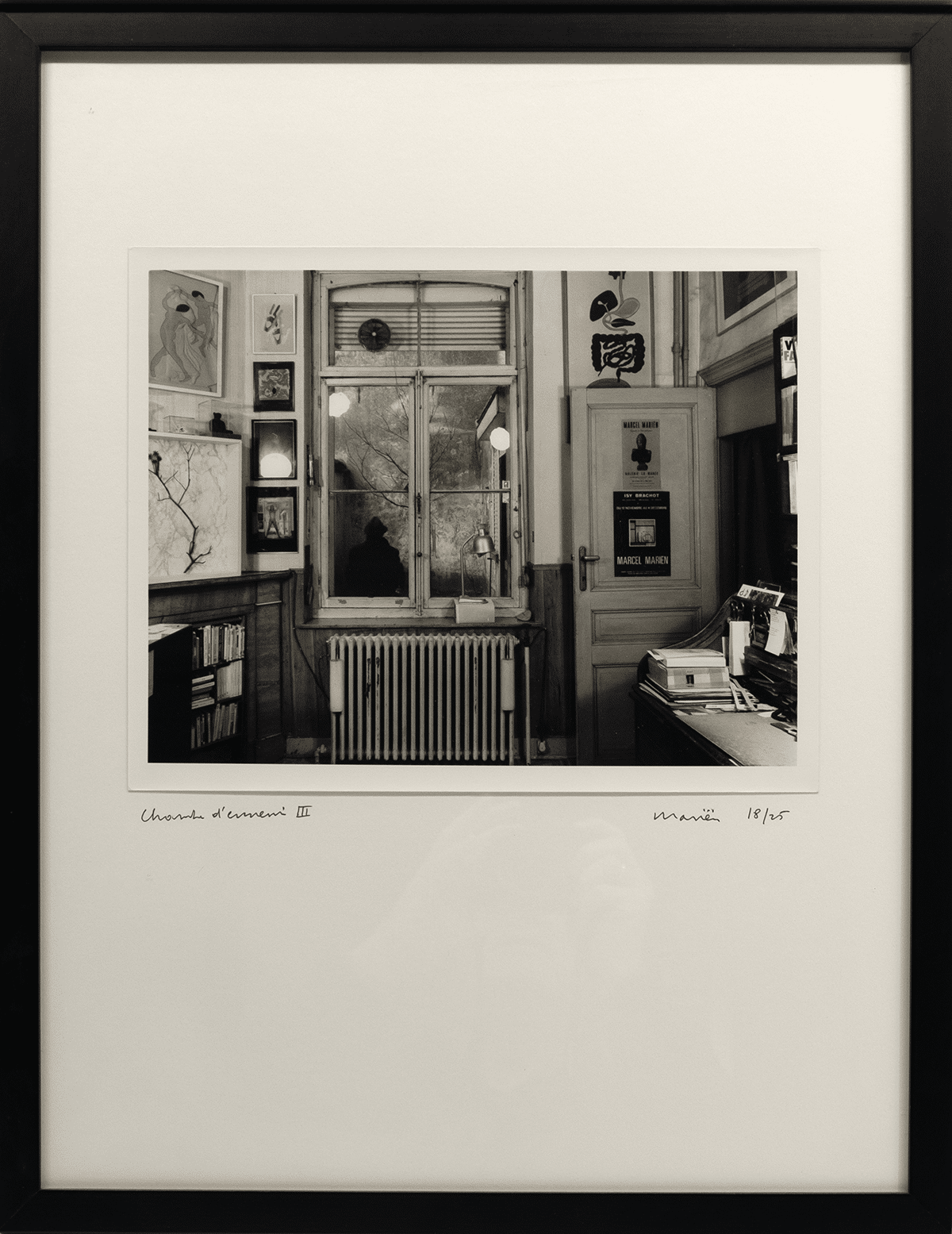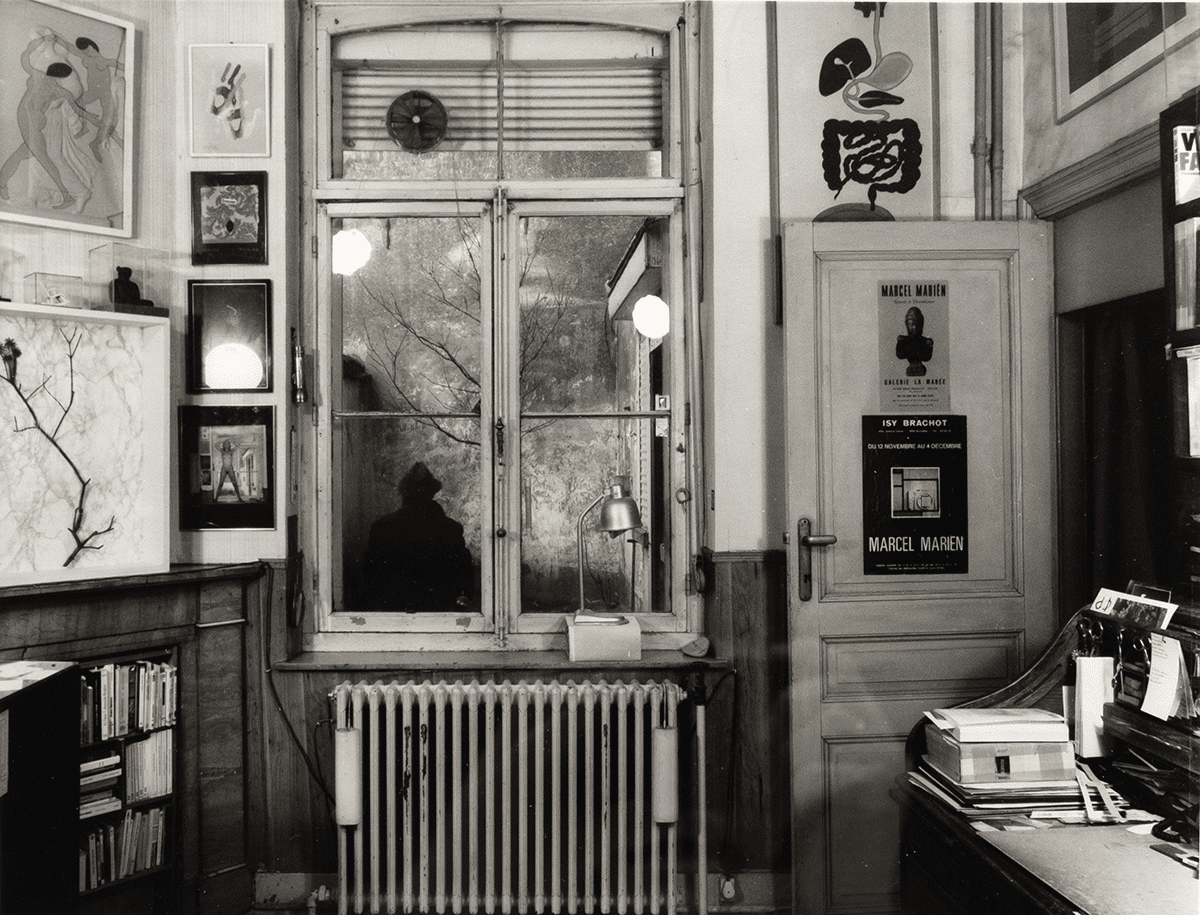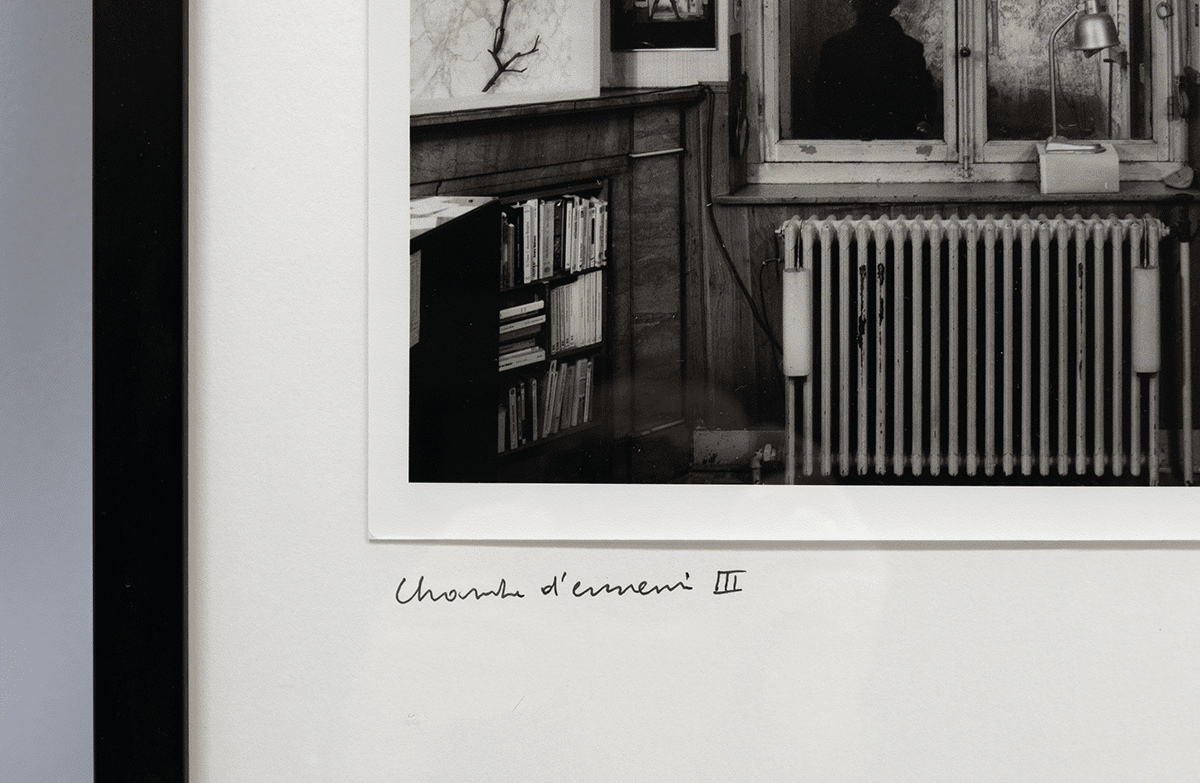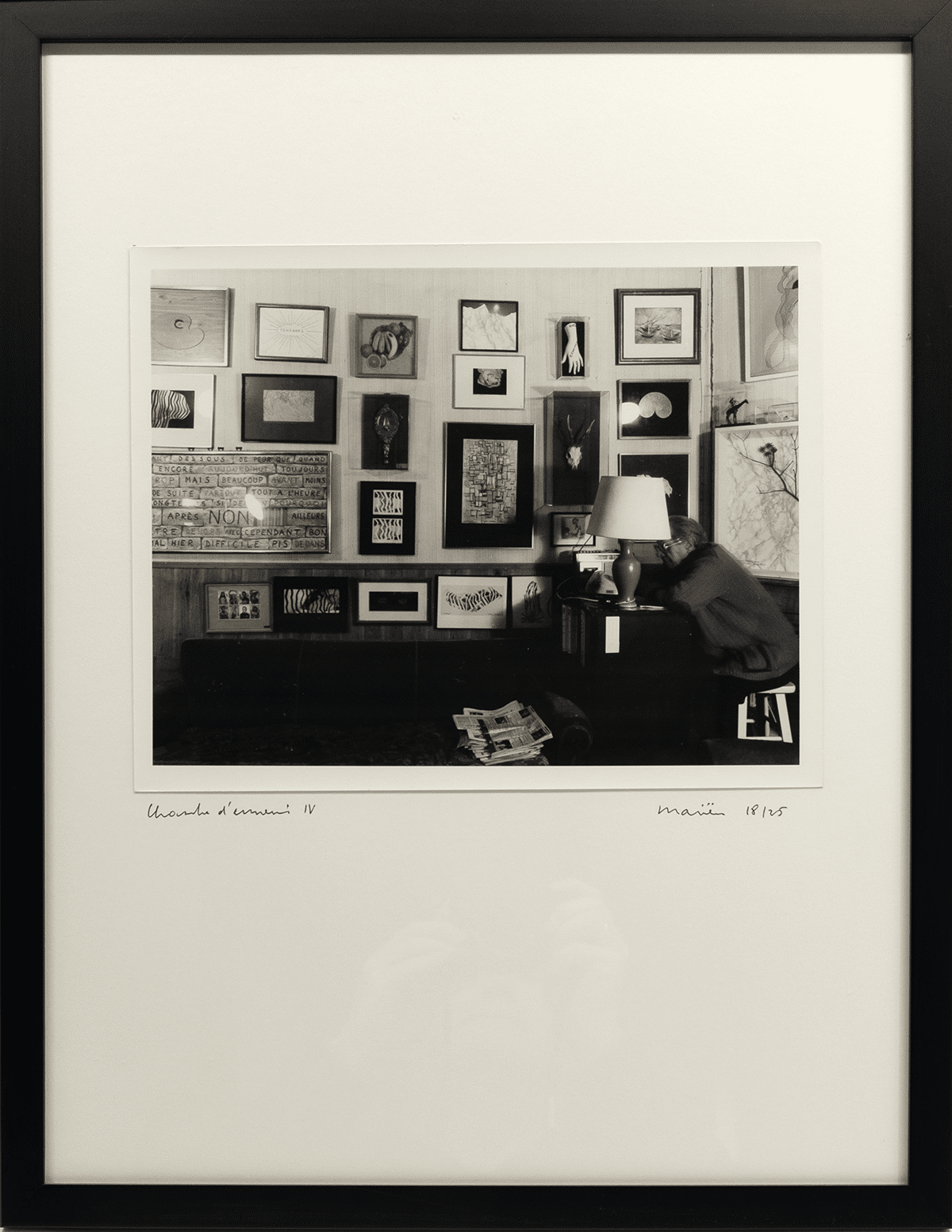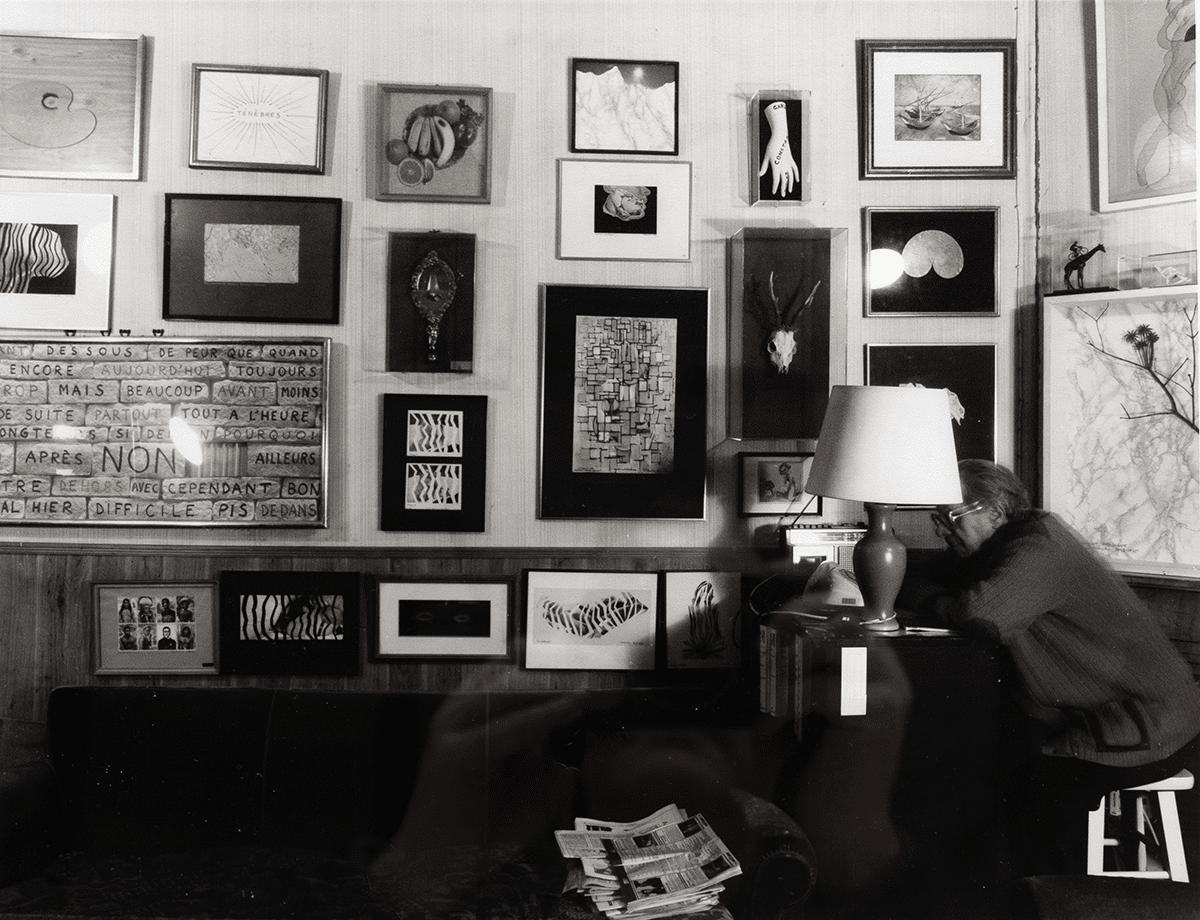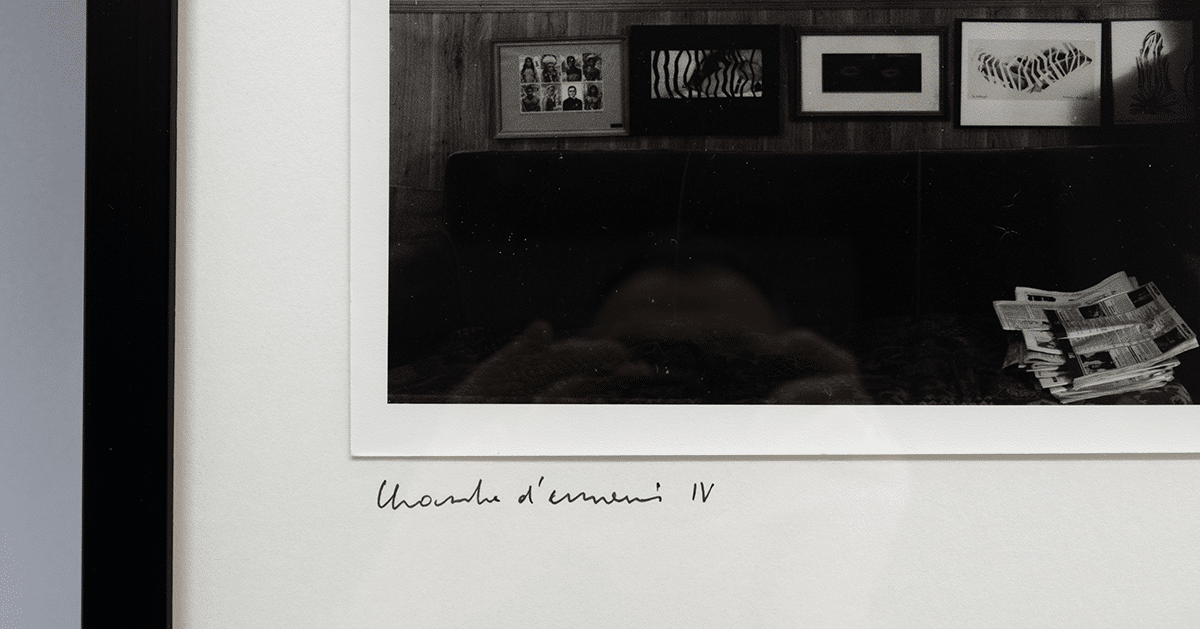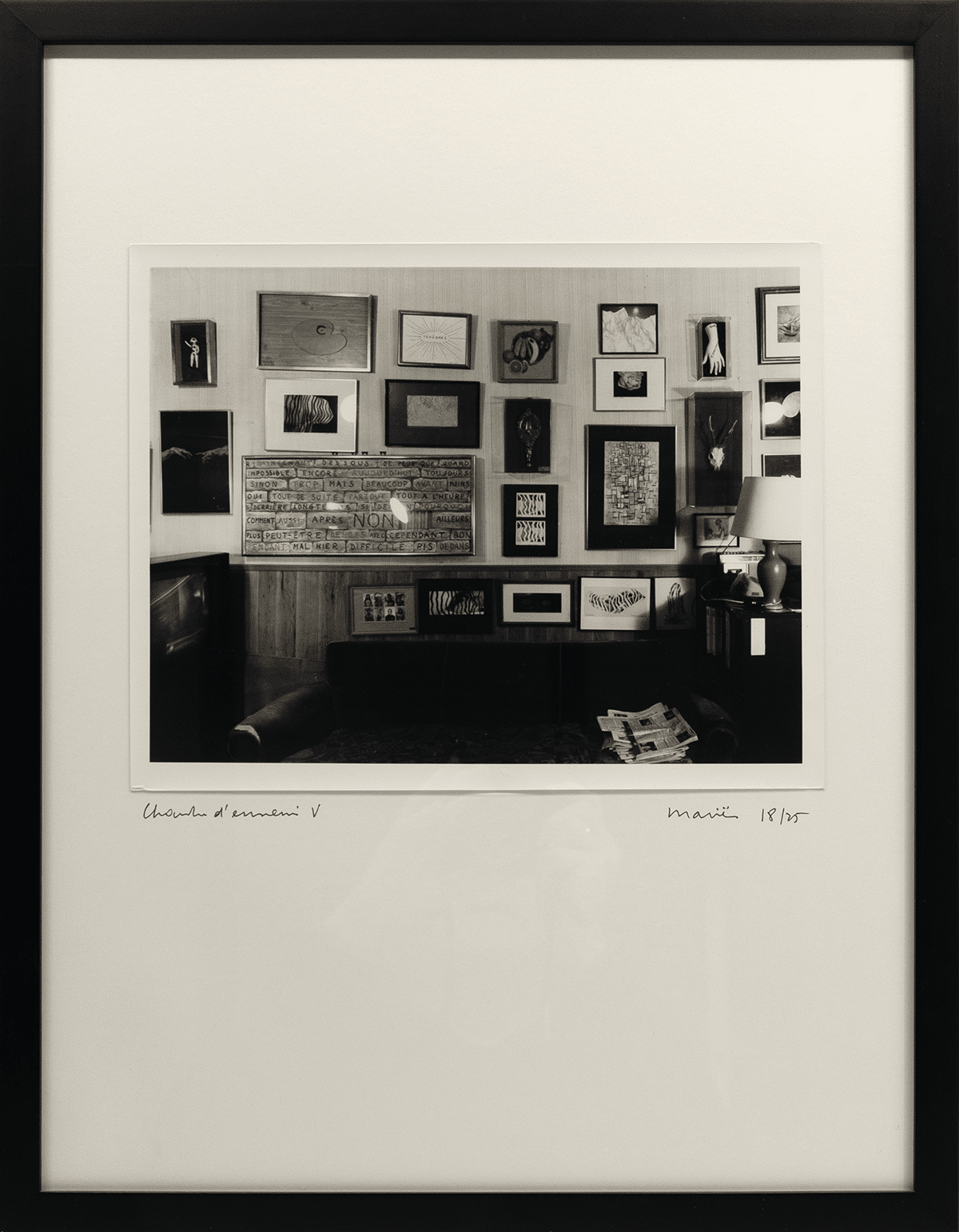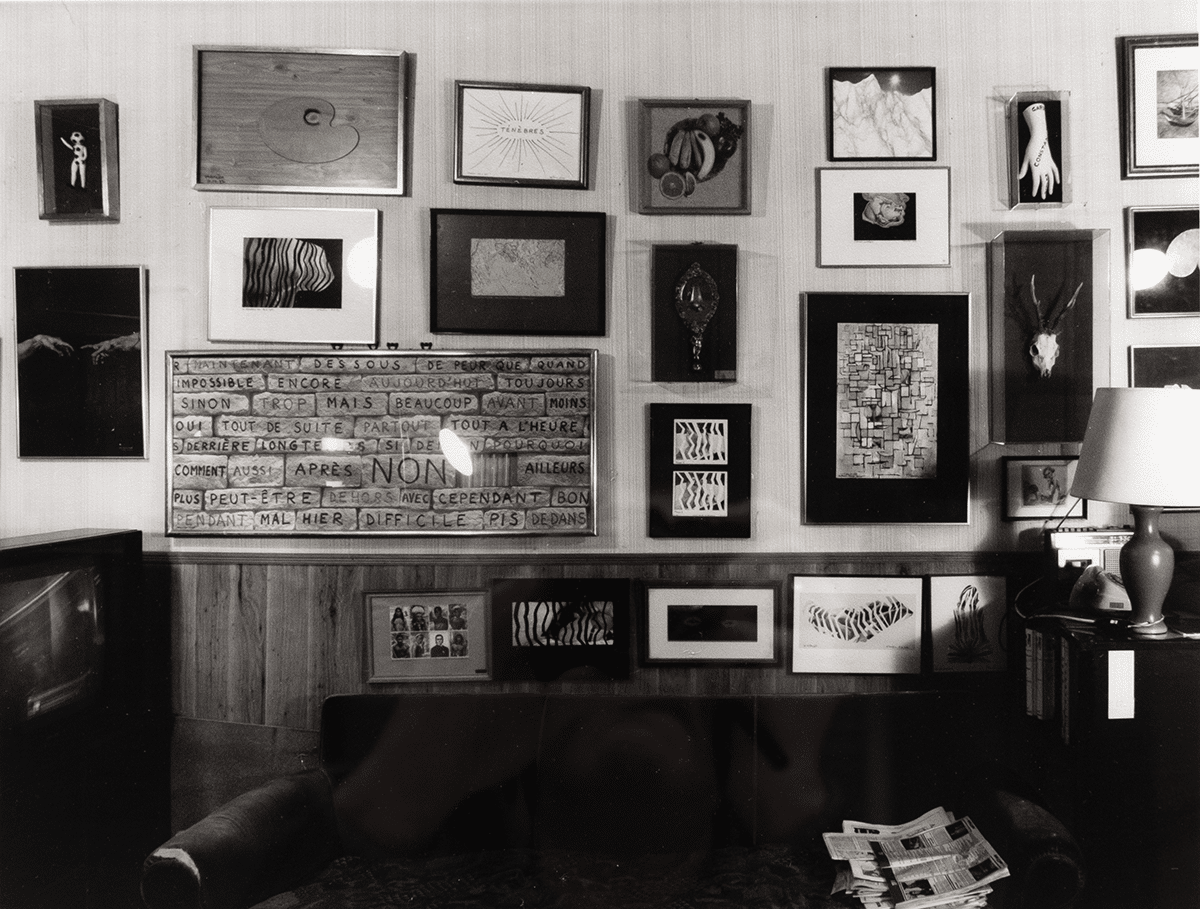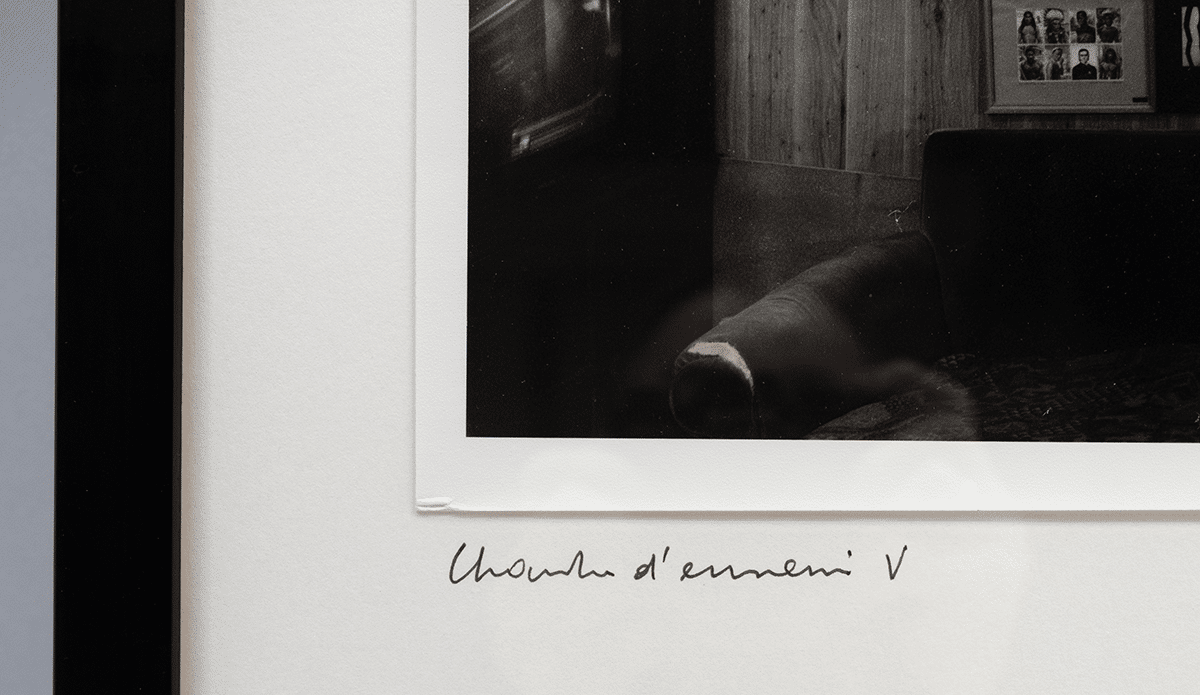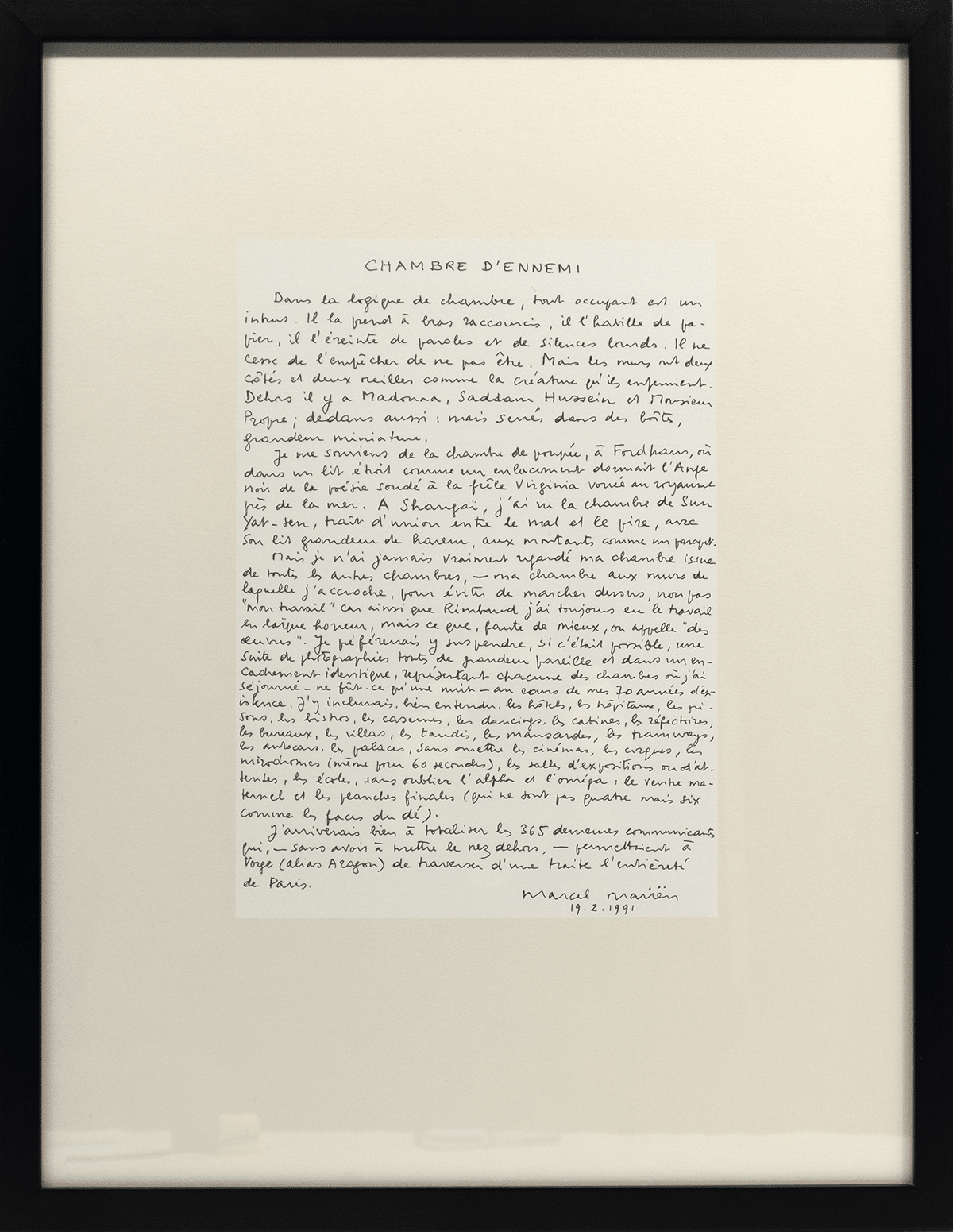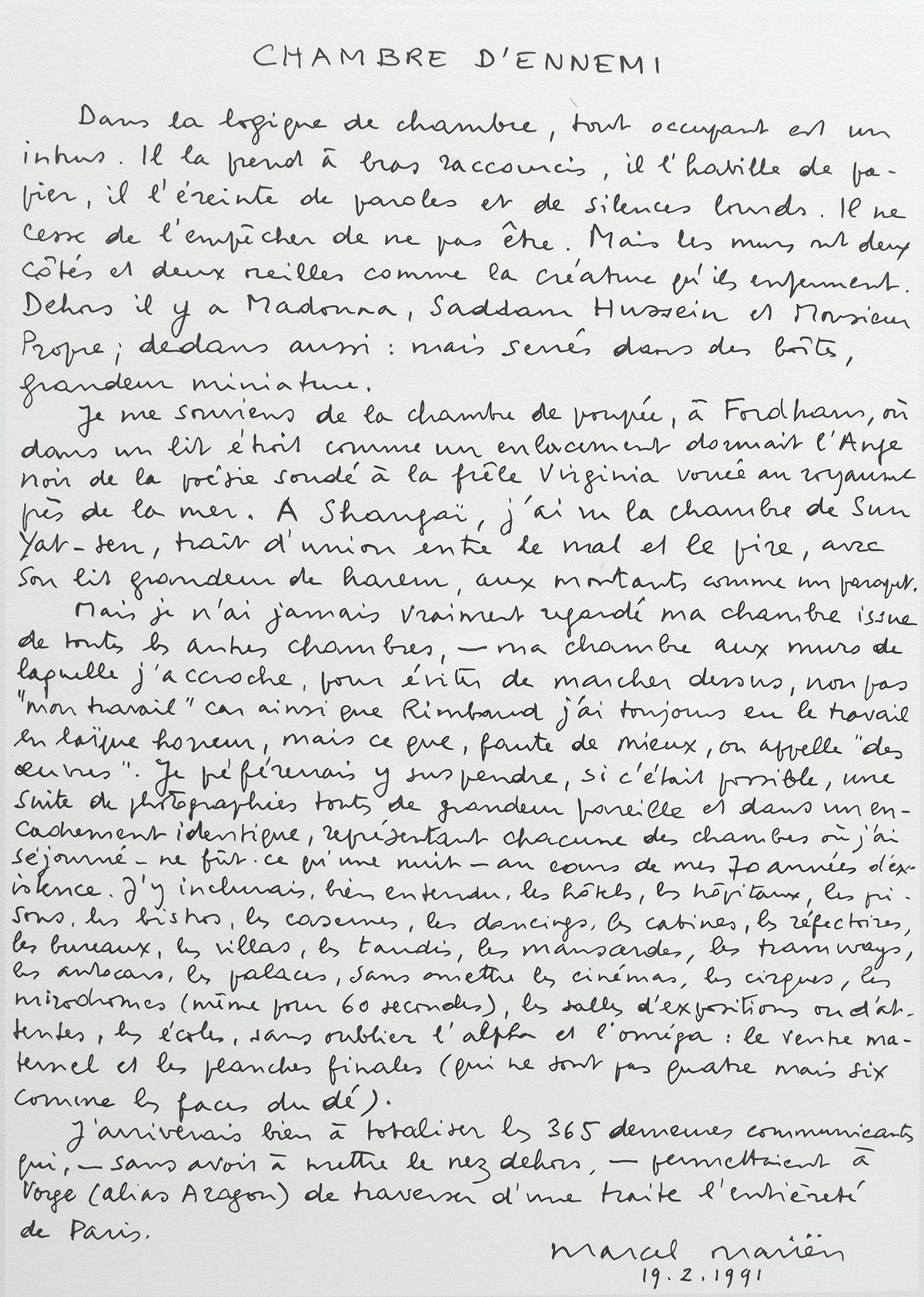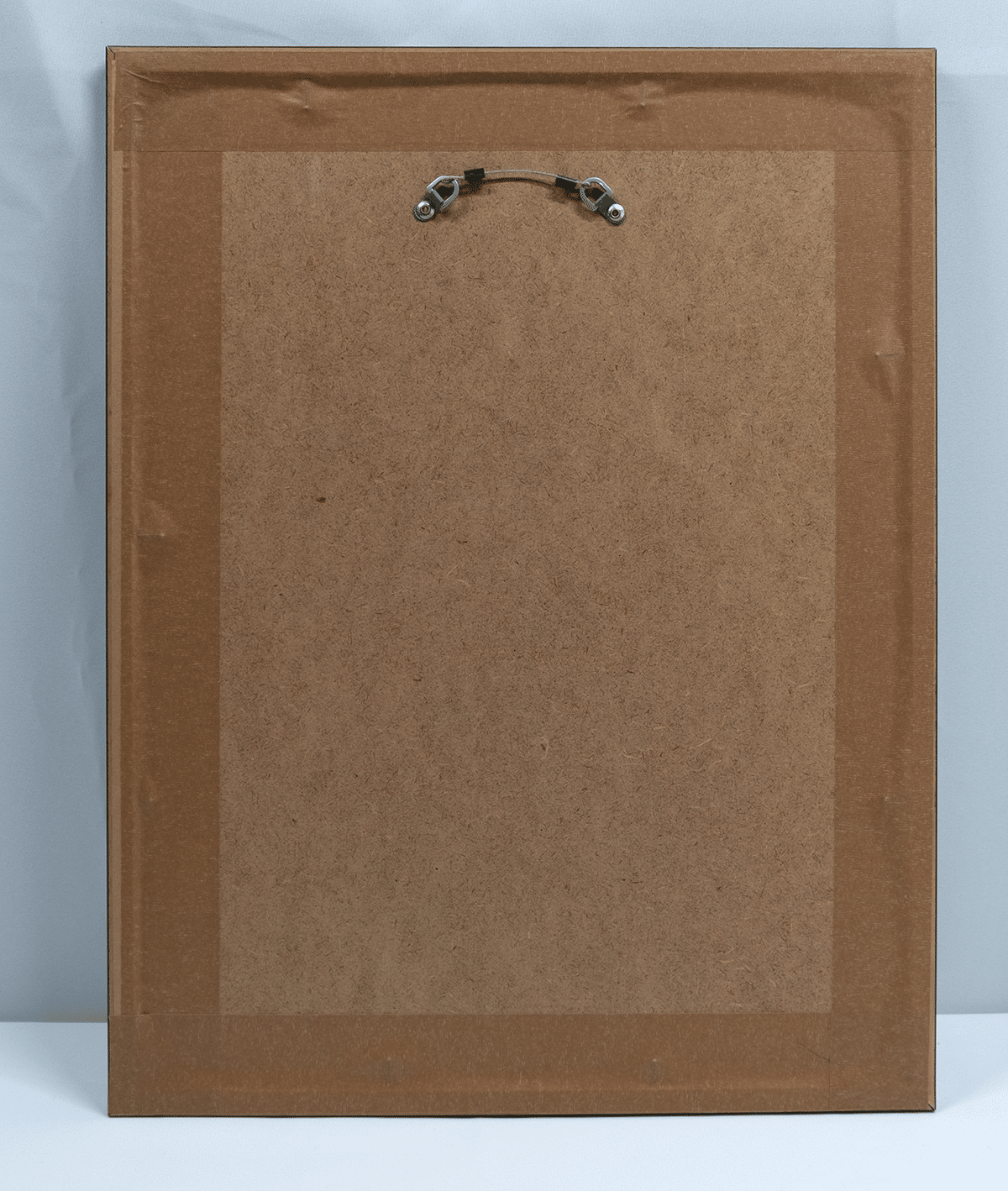Five photographs, signed, numbered and titled by Mariën and a text (dated 19.2.1991) by Mariën. 18/25 (plus 11 hc copies). The photographs were printed by Carine Demeter, Antwerp. Published by Max Pisti, Antwerp, 1991. Photograph dimensions approx 28.5*21.5 cm, pasted on Steinbach paper 39*51 cm. Frames 42*54 cm.
The title Chambre d'ennemi would be an ironic reference to the famous exhibition Chambres d'Amis organized in 1986 by director Jan Hoet of the Ghent Museum of Contemporary Art (now SMAK). It featured contemporary art works by internationally renowned artists in dozens of Ghent private homes. Even before the exhibition opened, an extensive polemic had developed between the participating artists, Hoet, art critics and participants who had not been selected. Jacques Charlier creates the artwork Chambre d'Ennemi for the exhibition. Several other exhibitions are organized in Ghent as a counterpart to Hoet's exhibition (Antichambre, Initiatief d'Ami). Mariën participates in an exhibition in the Sint Pietersabdij in Ghent.
Back to offer overview
Biography
Marcel Mariën (1920-1993)
The Belgian artist Marcel Mariën was active as a writer, photographer, filmmaker, artist and publisher.
In 1933, the French-speaking Mariën went to the atheneum where, due to an amended language law, he was obliged to continue his studies in Dutch, a language he did not master (“Latin in Flemish, that was Latin twice”). School interested him little and all he did was read; a hundred classics in small format. In 1935 he was employed as an assistant to a photographer. After a few months, Mariën establishes himself as an independent photographer, an enterprise that fails. In 1935 he sees a painting by Magritte for the first time in the city party hall on the Meir in Antwerp. Since then, he is converted to surrealism and begins to study this art movement. He visited René Magritte and then worked with Magritte for a long time; they came up with titles of paintings together and organized happenings, such as handing out counterfeit money on the Flemish coast. Mariën was in contact with many Belgian and French surrealists, with whom he collaborated on pamphlets, book publications and exhibitions.
A famous assemblage by Mariën is L’introuvable, “The Untraceable”; a spectacle frame with one glass and two ears, which he made after breaking his glasses in 1937.
In 1937 and 1938 he has a correspondence with Jacqueling Nonkels, a friend of René and Georgette Magritte, with these letters he sends along his first collages.
Surrealism in the visual arts, which Mariën says consists mainly of the works of René Magritte, is shaped by the process of metamorphosis and the alienation of existing ones. His own working method as a poet and as a maker of collages does not deviate from this pattern. In his collages, the title is often an integral part of the artwork. According to Freddy de Vree, “His collages … are so linked to language and to the broad-surrealist frame of reference of Nerval to Roussel, Duchamp to Ernst – and especially Magritte – that one should rather speak of three-dimensional poems.”
He co-founded the publishing house Le Miroir infidèle with Magritte. In 1959, with the help of volunteers, he made the only authentic surrealist Belgian film, L’Imitation du cinéma, which was censored in Belgium and banned in France. In 1967, he has his first solo exhibition in a Brussels gallery.
Information and quotes from:
https://nl.wikipedia.org/wiki/Marcel_Mari%C3%ABn
https://www.erfgoed-kbs.be/nieuws/marcel-marien-al-100-jaar
https://avilafilm.be/nl/director/marcel-marien
https://www.dbnl.org/tekst/_gid001198401_01/_gid001198401_01_0080.php

